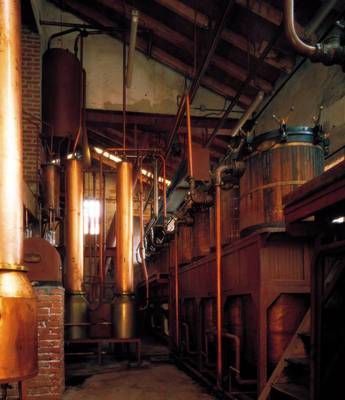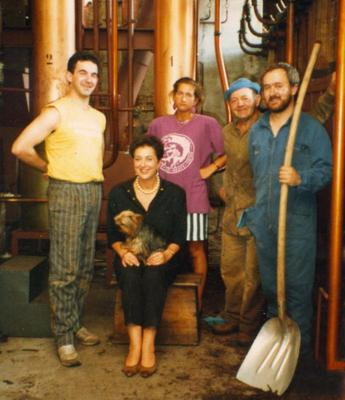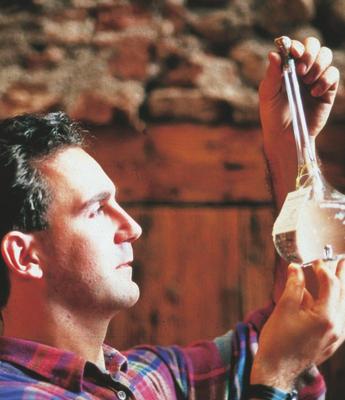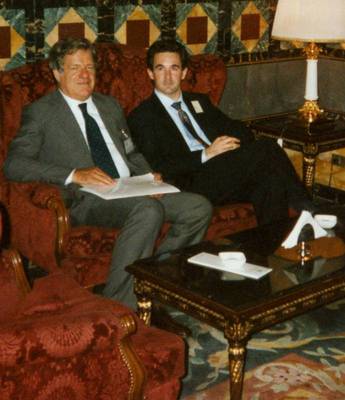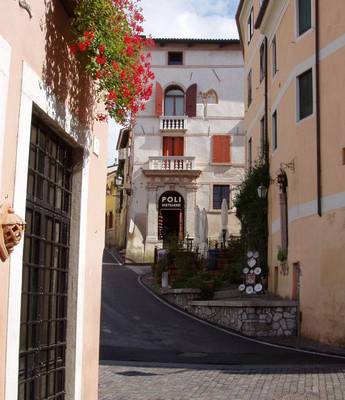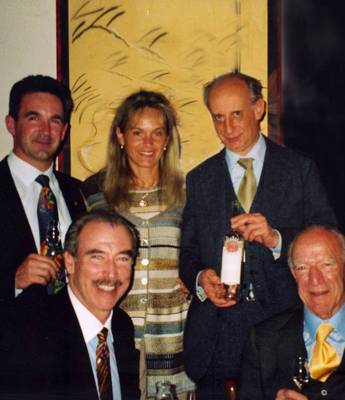History of a Veneto family
In the 1980’s, the fourth generation of Poli distillers joined the family firm with their contribution in ideas and innovative proposals.
The brothers Giampaolo (1962), Jacopo (1963), Barbara (1965) and Andrea (1969) decided to continue the activity of their father, grandfather and great-grandfather, with the enthusiasm of those entering a well-established tradition, but which can be improved with corrective measures ahead of the trends of a changing society.
<< 1982: double the still
The plant after the addition of 4 small steam boilers and a still for distilling grapes and fruit.
They immediately realized that consumers’ tastes were changing: in the past, customers drank Grappa to warm up, considering it as a kind of liquid nourishment, whereas the new consumers drink it to taste pleasant sensations, and to enhance the quality of life, with a subtle pleasure.
For this reason the Poli brothers sought to obtain a different Grappa, which was less aggressive, more refined and more harmonious.
<< 1983: the offspring grow
Teresa Parma with children Jacopo, Barbara and Giampaolo and Bruno Paietta, master cooper of the Distillery. Andrea, still a student, and not yet involved in the family business.
Toni’s reaction to his sons’ project was that of scepticism, but when the now elderly man tasted the new product, distilled by his sons after various experiments and trials, he honestly had to admit its superiority, and soon left the firm entirely in the hands of his three sons and daughter.
Today the Poli Distillery aims at only producing a quality product; in fact the quantity produces is now five times less than that obtained by the previous generations.
<< 1986: Amorosa
The Amorosa line is created, the product symbol of Distillerie Poli, resulting from 100 years of continuous development.
This is due to the precise choice of only distilling 15 tons of absolutely fresh and sound grape-marc a day, i.e. what can be distilled by the distillery’s ancient still, which is the one installed by their grandfather, Giovanni.
The aim of the Poli brothers is to succeed in changing the image of Grappa in the world,
<< 1993: Sassicaia Grappa
The first co-branding agreement of Distillerie Poli was drawn up with Marchese Nicolò Incisa della Rocchetta, producer of the famous Sassicaia wine, for the creation of “Grappa di Sassicaia”. (In the photo, sitting on the sofa, Marchese Incisa della Rocchetta and Jacopo Poli)
making it a product so refined that it can become a symbol of Italy, like cognac is for France and whisky for Scotland.
In order to consolidate the image of Grappa in foreign markets, where the Poli brothers export 50% of their production, two international joint-ventures have been formed.
<< 1993: Poli Grappa Museum
The Poli Grappa Museum, situated in the 15th century Palazzo delle Teste, opposite the famous “Ponte Vecchio” in Bassano del Grappa. Inside the Museum, the history of distilling and of Grappa is elegantly and effectively presented in a gathered and suggestive area, through a short by thorough instructive course.
Lastly, in recent years two Grappa Museums have been instituted: one in Bassano del Grappa, with the aim of researching the history of distillation, promoting and valorising Italian Grappa; the other in Schiavon, which seeks to explain the evolution of a typical family from the Vicenza district, that today represents an important part of the great entrepreneurial web of Italy’s north-east .
<< 1997: Grappa Luce
The world’s first and only Grappa produced in collaboration with an international partner, the Robert Mondavi Winery of Napa Valley in California, and the Marchesi de' Frescobaldi of Florence. Family photo with Grappa Luce: from the left Jacopo and Cristina Poli, Marchese Leonardo de' Frescobaldi, Michael and Robert Mondavi.

